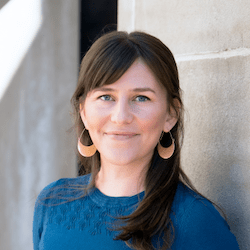Youth Voter Turnout: Annenberg Expert Unpacks the Issue
Voting in an election helps shape the government to work on their behalf. However, the majority of U.S. youth don’t vote regularly.

Approximately 53% of eligible voters (ages 18-29) did not vote in the 2024 United States presidential election, and 77% sat out in the 2022 midterms. However, the pattern shifted last week when youth voter turnout reached record highs. Youth voter participation in the mayoral election in New York City was 19%, compared to 11.1% in the 2021 election. Seventy-eight percent of young voters cast their ballots for Mayor-elect Zohran Mamdani, powering his victory. Similar trends were noted in Virginia and in New Jersey in their gubernatorial elections by The Center for Information and Research on Civic Learning and Engagement at Tufts University.
Annenberg researcher Danielle Cosme, Scientific Director of the Climate Communication Division of the Annenberg Public Policy Center and Senior Researcher in the Communication Neuroscience Lab, examines ways to motivate and support youth to vote. We spoke to her about a recent commentary she and her team — doctoral student Kirsten Lydic, postdoctoral fellows Alyssa Sinclair and Diego Reinero, and Professor Emily Falk — wrote on how to support youth in overcoming voting barriers.
In addition to structural barriers to voting, youth also face psychological barriers. What are they, and how do they interact with other barriers to stymie youth voting?
In the current climate, where youth lack adequate representation in government, these barriers interact in ways that can create a vicious cycle of political disempowerment among youth. In this cycle, structural and psychological barriers reduce youth voting; low participation then disincentivizes elected officials from addressing youth concerns, which in turn can heighten disillusionment and further depress youth voting.
We discuss ways to break this cycle by supporting youth to navigate existing structural barriers and overcome psychological barriers. We highlight three classes of developmentally-relevant psychological barriers that affect youth related to information, motivation, and self-regulation.
Since youth are often voting for the first time, they are disproportionately affected by informational barriers about how to register and vote, which can make voting feel confusing and overwhelming and reduce their sense of self-efficacy.
Motivationally, youth tend to view voting as less self-relevant and socially normative and also report higher levels of disillusionment and dissatisfaction with the political process than older adults, which can decrease their perceived value of voting and weaken voting intentions. Youth are also still developing self-regulatory skills like goal setting, planning, and organization that can help them follow through on their intentions to vote.
Your commentary introduces several approaches to overcoming psychological barriers to voting. What are they, and how might political campaigns and civic organizations use them?
We describe how organizations can apply theories about decision-making and behavior change to guide their campaign strategy and identify strategies to help youth overcome psychological barriers to voting. If campaigns want to support youth who already have strong intentions to vote but need help following through, they might use strategies that support self-regulation by helping youth make detailed voting plans. On the other hand, if campaigns want to support youth who don’t yet intend to vote, they should focus on shifting underlying beliefs about voting — for example, related to disillusionment or the self-relevance of the social normativity of voting — to build positive attitudes toward voting, which in turn can strengthen voting intentions. Campaigns might do this by helping youth consider how voting is connected to their values and identify what’s at stake for them and their communities in the election, or by spreading support in social networks through relational organizing.
You encourage researchers and practitioners to engage youth in campaign design and highlight a voting research project from your team, co-designed with students from Penn Leads the Vote. How did you partner with Penn students to create and test youth-focused get-out-the-vote messages?
We wanted to design the best possible get-out-the-vote messages to motivate Penn students to vote, so we used two powerful tools: scientific theory and knowledge, and lived experience and local knowledge from students.

If campaigns want to support youth who already have strong intentions to vote but need help following through, they might use strategies that support self-regulation by helping youth make detailed voting plans.
Using a participatory approach, we brought together communication researchers from our team and a group of amazing undergraduate students from Penn Leads the Vote (PLTV) to conduct a research project during the summer and fall leading up to the 2024 general election.
Together, we systematically mapped student beliefs about voting and identified a set of promising beliefs that were strongly associated with voting intentions but not already widely held by students. We then co-designed and tested nonpartisan social media messages targeting these beliefs. The messages students found most motivating targeted beliefs about the impact of voting and emphasized the personal relevance of voting by connecting it to their values and the issues they care about.
We also tested these messages against existing messages from PLTV and a national voting organization, Rock the Vote, and found that our messages — integrating theory-guided research and student knowledge — were substantially more effective in a sample of Penn students and a national sample of students.
We were thrilled by these results and continued working together throughout the spring semester to write up a paper, recently preprinted, to share our results with the scientific community. Most importantly, though, this process created knowledge and messages that could be used immediately by PLTV in their ongoing civic engagement activities on campus.



